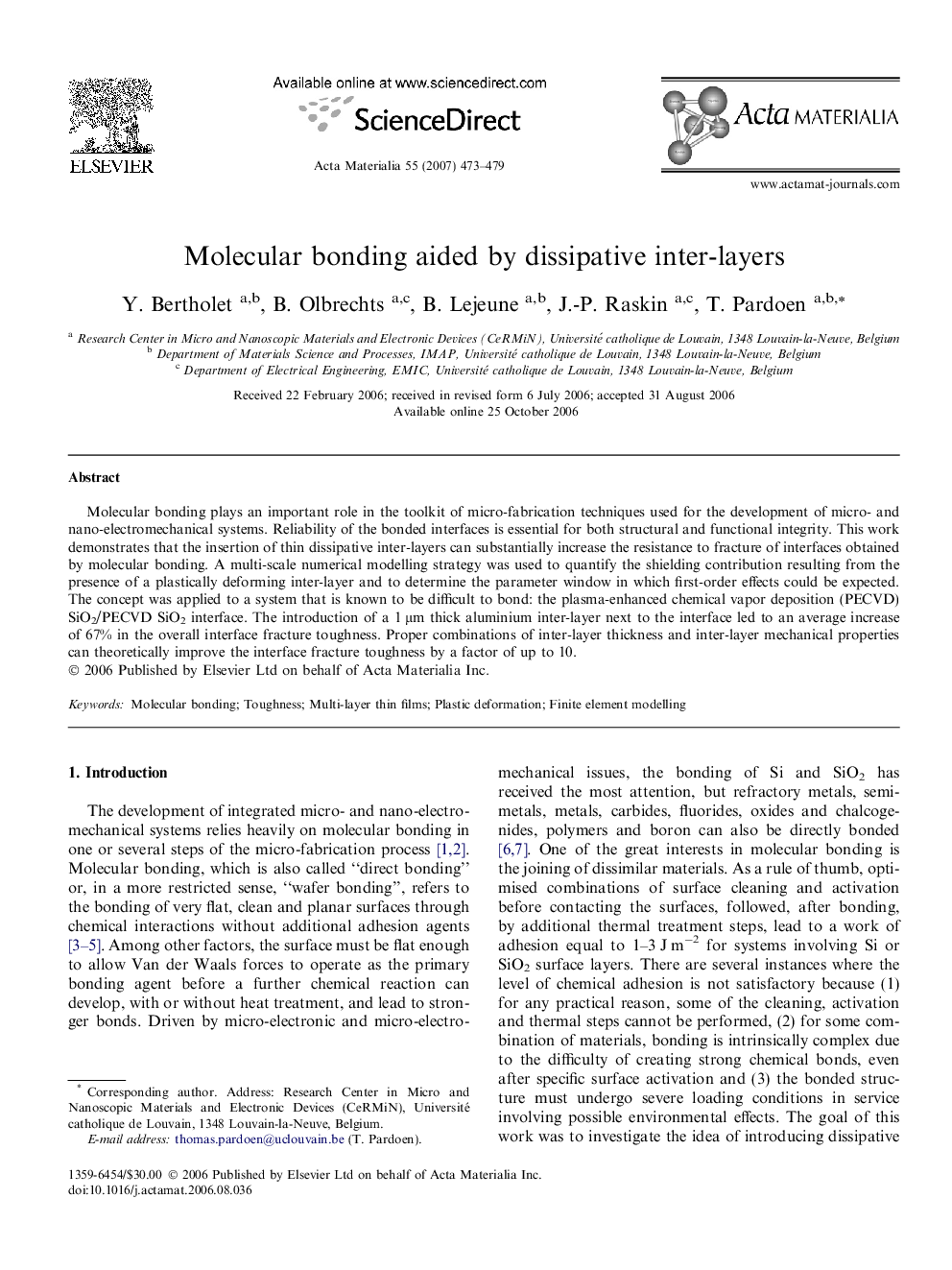| Article ID | Journal | Published Year | Pages | File Type |
|---|---|---|---|---|
| 1450219 | Acta Materialia | 2007 | 7 Pages |
Molecular bonding plays an important role in the toolkit of micro-fabrication techniques used for the development of micro- and nano-electromechanical systems. Reliability of the bonded interfaces is essential for both structural and functional integrity. This work demonstrates that the insertion of thin dissipative inter-layers can substantially increase the resistance to fracture of interfaces obtained by molecular bonding. A multi-scale numerical modelling strategy was used to quantify the shielding contribution resulting from the presence of a plastically deforming inter-layer and to determine the parameter window in which first-order effects could be expected. The concept was applied to a system that is known to be difficult to bond: the plasma-enhanced chemical vapor deposition (PECVD) SiO2/PECVD SiO2 interface. The introduction of a 1 μm thick aluminium inter-layer next to the interface led to an average increase of 67% in the overall interface fracture toughness. Proper combinations of inter-layer thickness and inter-layer mechanical properties can theoretically improve the interface fracture toughness by a factor of up to 10.
